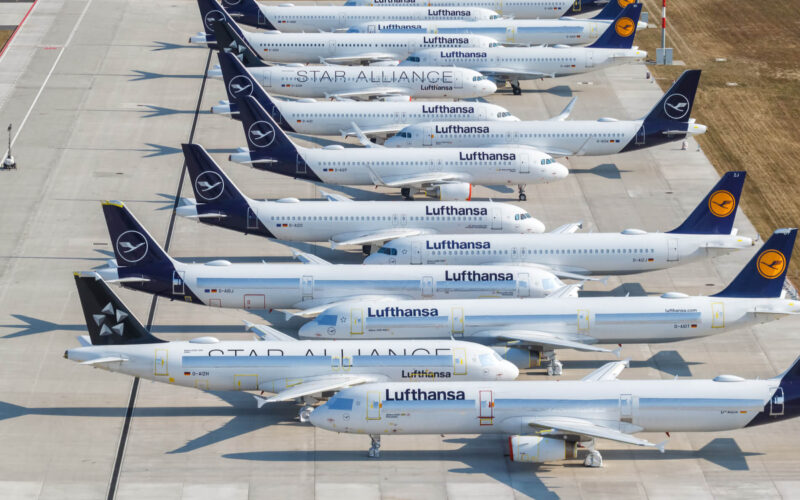While cargo for many airlines has become a bright spot during a dark period, more often than not, the booming freight business was not enough to cover other operational losses. Lufthansa (LHAB) (LHA) was no exception. So, the group will get rid of older and more inefficient aircraft, including the Airbus A380 and the Boeing 747-400.
The German airline group, which includes such airlines as Austrian Airlines, Brussels Airlines, Lufthansa (LHAB) (LHA), and Swiss International Air Lines among others, reported that it finished 2020 with a net loss of €6.7 billion ($8.07 billion). Revenue at the group dropped from €36.4 billion ($43.8 billion) from a year prior to €13.6 billion ($16.3 billion). By Q4 2020, the Lufthansa Group burned through €300 million ($361.6 million) of cash per month. A quarter prior, the group used €206 million ($248.2 million) of its cash reserves monthly.
The bright spot throughout 2020 was the performance of Lufthansa Cargo, which the group indicated was the only company to make “a positive contribution to earnings, reporting a record result.” While capacity at the freight division fell by 39% due to the grounded passenger aircraft and subsequent loss of belly cargo capacity, the average cargo load factor was recorded as 69.6%. Compared to a year prior, the load factor increased by 8.2%. According to Lufthansa (LHAB) (LHA), cargo yields increased by a whopping 54.6%.
More aircraft and subsidiary cuts?
At the beginning of the COVID-19-induced crisis, Lufthansa (LHAB) (LHA) was quick to retire and phase out older aircraft. However, the airline might be looking to retire additional aircraft going forward, as well as closing subsidiary businesses that do not coincide with the core airline business.
Overall, Lufthansa’s (LHAB) (LHA) airlines are prepared to deploy up to 70% of its 2019-levels capacity in the short-term. The group envisions that it would return to 90% of pre-crisis levels of capacity by 2025. “The expectation remains that positive operating cash flows will be generated when capacity on offer is above 50 percent,” further read the airline group’s outlook, as it predicts that capacity by the end of the current year will be between 40 and 50% of the pre-crisis levels.
Around 350 aircraft from the group were placed into temporary storage by the end of 2020, maintaining their technical capacity. According to Lufthansa (LHAB) (LHA), this will “ensure the prompt reintegration of the aircraft into the operational fleet, if necessary, in order to maintain flexibility.” Meanwhile, 150 aircraft were permanently retired.
“In the short term, a conscious commitment will be made to deploy the most efficient aircraft types to serve the current route network, in particular, new B777-300ERs as well as A350-900s and A320neo family aircraft,” commented the airline in its annual report.
In terms of new aircraft coming into the airlines, Lufthansa (LHAB) (LHA) had 177 firm orders and 102 options. In 2021, 12 aircraft (one Airbus A220 and 11 of the Airbus A320neo family) will be delivered to the Lufthansa Group. Starting by 2022, Boeing will deliver the 787 Dreamliner to the company – starting a year later, additional Airbus A350 aircraft and its first Boeing 777X are scheduled to join Lufthansa’s (LHAB) (LHA) fleet. The group also highlighted the fact that by no later than 2025, the number of different cockpit types in the long-haul fleet will go from 14 to eight, including the disposal of such aircraft as the Airbus A340, A380, or the Boeing 747.
“In addition, the Group is examining the disposal of subsidiaries that offer only minor synergies with the core business.”

